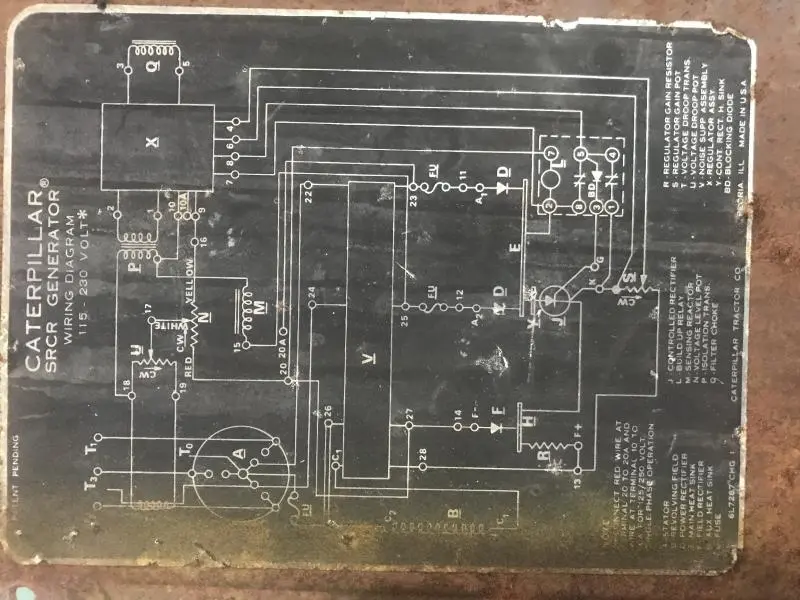
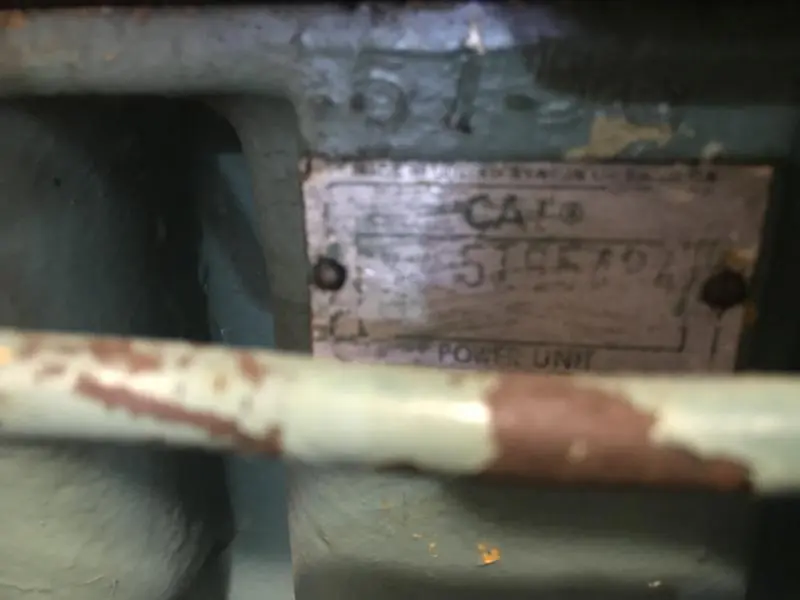
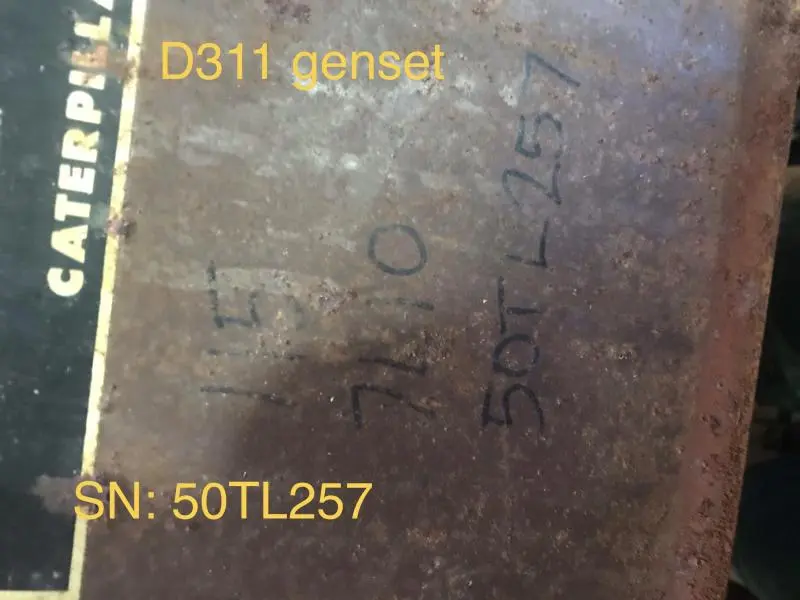
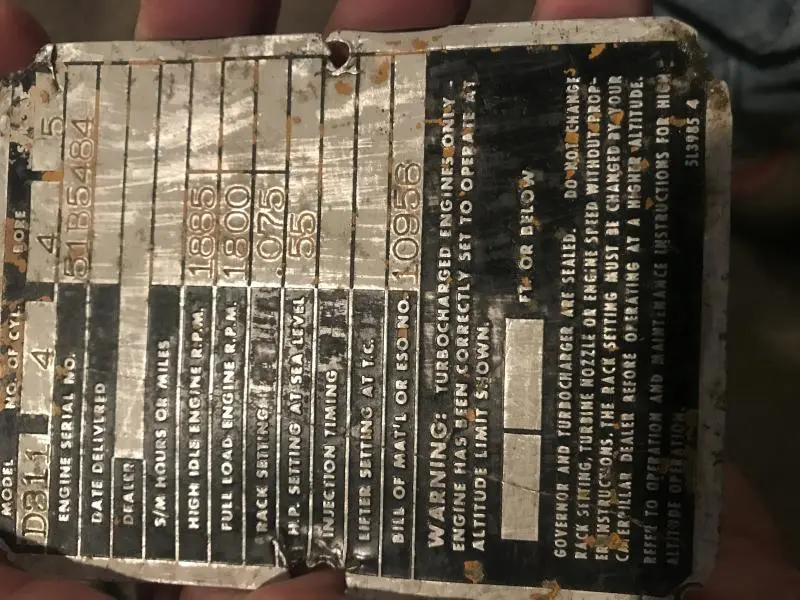
You don’t mention what other AC electrical equipment in use at the same time as the problem equipment is doing.
I would think if your generator is having a problem you would notice blinking or dimming lights when a heavy load is turned on or possibly brightening when such things are turned off.
As a convenient check on power quality, you may want to buy one or two “kill a watt” units. They’re usually around $25-$30 or so and can be plugged in any 120 volt outlet to display Volts and Hz (CPS) of incoming power as well as amperage and power consumption of anything plugged into the unit.
If you are seeing brown out or black out events, then by all means investigate the generator. If not, I would get an electrician in to check out the wiring, looking especially for connections that have gotten hot in the feeders that connect the CAT generator.
Thx. Replies sent me back to my existing parts book (Caterpillar D311 FORM UE036137) to check out - Old Magnet correct. Turns out generator info included in back of the book - just had not noticed before.
Further - no elec problems noticed in any other equipment - refrigeration, lights, outlets, pumps (110 and 220), battery chargers, etc - when running the D311. Hence, my confusion. Wiring looks good so far in checks.
Will contact local electrician guys, again, figure out what aberration is being generated. Need to figure out what to measure to find problem as voltage and frequency seem to be be fine.
Thx, again
This may be of no help but I notice that some devices in my house don't like the output of my standby generator - for example my UPS trips on standby power. I should probably put the oscilloscope on it and see what's bugging the UPS. Is it possible that the way it's wired the leg that those devices is on is putting out too many volts?
Most common problem is frequency excursions from 60 Hz. Most often happens when a load is applied and the governor response is slow and may overshoot before settling back to set point.
Mechanical governors also have “droop” such that at no load the governor might be set at 62.5 Hz and at half load be spot-on at 60 but by the time it gets to maximum load be down to 57.5 Hz. That would be a bit excessive, but you get the idea of droop. Usually the governor setpoint is set under a normal load, so at least at that condition the frequency should be close to 60.
Unfortunately the governor on the Caterpillar probably isn’t going to be easy to change the droop and sensitivity but it’s possible that you may be able to simply raise or lower the RPM/Hz set point slightly and keep everything happy. The programming of the VFD and the amp might be too restrictive and it’s possible there’s settings that you can modify to let it operate on a wider range of frequency without faulting. However, I don’t understand why the VFD would pull too many amps and trip its breaker because of a minor frequency deviation.
VFDs usually have programming that prevents them from operating overloaded. Is the unit new or has it ever operated successfully on the Caterpillar generator?
Being that old, the old VFD might have been a different design than the new one. Some of them had/have a passive rectifier with plain old diodes to take the 60 Hz AC input to charge the DC bus. Then the active control takes snippets of the DC voltage at the right time and duration to form the desired frequency AC wave
Other designs use an active front end with high speed switching to sample the incoming AC to charge the bus and the control assumes/needs a nice 60 Hz Sine wave to turn on the switches at the right time. These may not play nice with a generator that cannot keep the frequency steady on 60 Hz. Most generators don’t produce a clean sine wave either and the distortion can cause problems.
VFD or other DC power supply on an AC generator can sometimes wreak havoc with voltage regulators. Usually that is more a problem when the DC power supplies are most of the load on the generator like a server building for example.
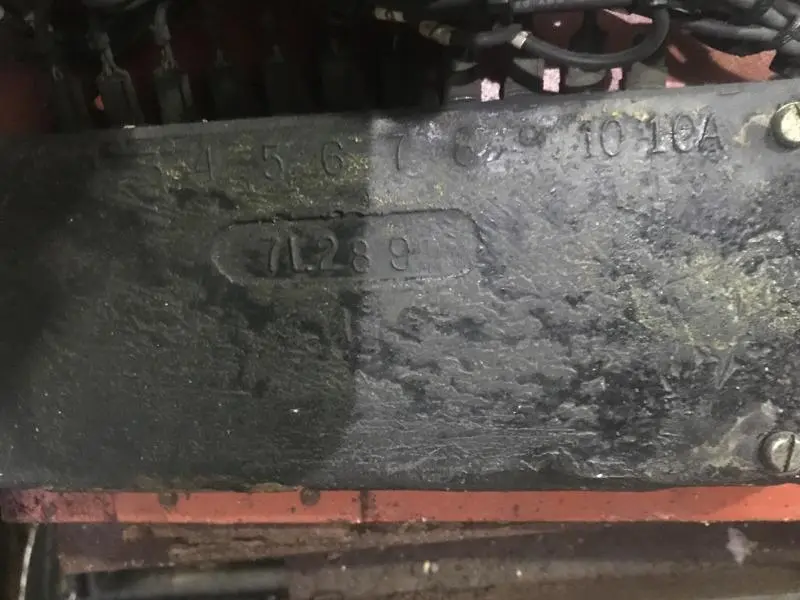
Since the last post, continuing the search for likely problem and solution - and got quickly diverted into ancillary problems to fix (e.g., hinges rusted thru on door holding exciter components risking pulling out wiring, fastener threads stripped - the usual)
After a sweep of the country side - local long time Cat guy for gensets (different from Mr Go To for engine probs), several marine electricians, a half dozen others, and Quinn who still wants $650 plus mileage to come take a look (4 hour minimum), have decided I can look for a replacement voltage regulator. All the local experts settle in on voltage regulator - as likely source of the problem. Figure I can try at least one (maybe more) as a shot in the dark if the alternative is a $650 tech visit.
So, took apart the unit and found regulator - 7L289 (agrees with parts manual) - now maybe described as 7L-0289 - see pic
No luck after three days of searching on the web - catparts.com recognizes the part but doesn't let me in
Anyone with source for this part or aftermarket ideas?
thx